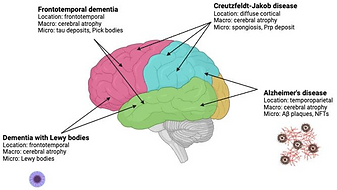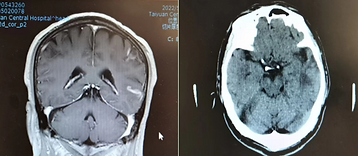Volume 3 Issue 1 (January 2024)

BRIEF REPORT
Intentionality for better communication in minimally conscious AI design
R.R. Poznanski, L.A. Cacha, V. Sbitnev, N. Iannella, S. Parida, E.J. Brändas and J.Z Achimowicz
Consciousness is the ability to have intentionality, which is a process that operates at various temporal scales. To qualify as conscious, an artificial device must express functionality capable of solving the Intrinsicality problem, where experienceable form or syntax gives rise to understanding 'meaning' as a noncontextual dynamic prior to language. This is suggestive of replacing the Hard Problem of consciousness to build conscious artificial intelligence (AI). Developing model emulations and exploring fundamental mechanisms of how machines understand meaning is central to the development of minimally conscious AI. It has been shown by Alemdar and colleagues [New insights into holonomic brain theory: implications for active consciousness. Journal of Multiscale Neuroscience 2(2023), 159-168] that a framework for advancing artificial systems through understanding uncertainty derived from negentropic action to create intentional systems entails quantum-thermal fluctuations through informational channels instead of recognizing (cf., introspection) sensory cues through perceptual channels. Improving communication in conscious AI requires both software and ...
ORIGINAL RESEARCH
Dodecanogram (DDG): advancing EEG technology with a high-frequency brain activity measurement device
P. Singh, J. S. Manna, P. Dey, S. Sarkar, A. Pattanayaka, S. Nag, S. Pramanik, K. Saxena, S. D. Krishnananda, T. Dutta & A. Bandyopadhyay
EEG measures electric potential changes in the scalp. Even though it has been associated with human thoughts, there has been no direct evidence. The problem with EEG is that it measures variations in current or electric potential in the millisecond time domain, where muscle movement strongly affects the readings. The millisecond time domain is equivalent to the kHz resonance signal generated by a dielectric resonator, and every single cell membrane resonates in this time range. So, the measurement of EEG could come simply from the skin and not from the brain. Therefore, we have replaced this 1875 technology with the dodecanogram, which reveals 12 frequency bands or 12 discrete time regions where brain activities are most significant. We measure brain activity using a stream of pulses and a logic analyzer that counts ultra-short pulses needed to emulate the brain's scalp potential changes. We have created another version of DDG where, using an array of RLC resonators, we sense the ultra-low-power electromagnetic radiation from different locations on the brain's surface. Since we measure signals from Hz to THz, covering 12 orders of time ranges as a ...


CASE STUDY
Putnam and Dennett on instrumentalism and the intentional stance
H.G. Callaway
This paper examines Dennett’s conceptions of intentionality and consciousness—focusing on his concept of the intentional stance (Dennett 1987, 1991b, 2021). It chiefly proceeds from a series of critical remarks due to Putnam (Putnam 1999, 2016). Dennett has written extensively on the philosophy of mind; his work includes many scholarly and scientific contributions. He has attracted much attention to the philosophy of mind, cognitive psychology, and computer science, and he is an important critic of alternative views and theorists in related fields. The present paper draws on critical departures from Quine’s physicalism in publications of Putnam and Davidson (Davidson 1963, 1997); and it examines criticism brought against Dennett’s work on grounds of forms of instrumentalism and antirealism in the intentional stance. Evaluating Dennett’s positions and Putnam’s critical perspectives turns largely on understanding the relation of Dennett on intentionality, consciousness and the mental to formative and controversial theses of his acknowledged ...
ORIGINAL RESEARCH
Cognitive paradoxes and brain mechanisms
Erkki J. Brändas
It is generally agreed amongst philosophers and neuroscientists that the main obstacle between the science of the brain and the conscious nature of the mind is rooted in an objective-subjective dichotomy. As a result, it is further common to classify natural sciences in terms of their epistemic values and their ontological existential attributes. As a result, one concludes that a computer that is useful for studying nature, such as the conscious mind, is not itself part of nature, or as phrased differently by the noted philosopher, John Searle, ‘there are no Turing Machines in nature! However, the great physicist John Archibald Wheeler, by declaring the famous dictum, ‘it from bit’, did impart a somewhat different approach to the true nature of reality. To reconcile the two contrasting portraits, a different picture, based on the principle of self-reference, will be presented and applied to the brain-mind problem. It is demonstrated how this principle imparts a thermo-qubit syntax, i.e., ‘bit from it’, for communication between increasingly more complex physical systems. Altogether, the steady state situation produces negentropic pockets for quantification and storage of information to act as ....


REVIEW
Oliwia Szymanowicz, Sandra Pawlak, Ewelina Potocka, Wojciech Kozubski and Jolanta Dorszewska
Dementia is a progressive, irreversible disease characterized by cognitive decline. This is a growing social problem, especially in an aging society. The classification of dementia includes Alzheimer's disease, Lewy body dementia, frontotemporal dementia, vascular dementia, and mixed dementia. In 2019, 271,998 people died from dementia, and Alzheimer's disease is the sixth leading cause of death. However, the pathophysiology of this disease is complex and not fully understood. It is a multifactorial disease whose pathogenesis involves a combination of genetic, environmental, and lifestyle factors. One of the genes involved in the pathogenesis of the disease is the apolipoprotein E (APOE) gene, which is one of the most common risk factors for Alzheimer's disease. The importance of other genes, such as the presenilin genes (PSEN1 and PSEN2), TREM2 gene, MAPT gene, and APP gene, which are associated with various forms of dementia, is also emphasized. Another problem is the growing number of identified genetic variants of genes involved in the onset of dementia. Chemical changes in the brain, such as the accumulation of abnormal excitotoxic proteins,
CLINICAL CASE STUDY
S. Zhang*, F. Jia, X. Wang and X. Chen
When discussing cerebrovascular diseases, we will undoubtedly think of intracranial arterial system diseases, such as cerebral infarction and cerebral embolism. It is easy to ignore intracranial venous system diseases. By describing the diagnosis and treatment of a case of intracranial venous thrombosis, we emphasize the need for physicians to consider the formation of intracranial venous thrombosis and the formation of arterial thrombosis in diagnosing cerebrovascular diseases.


ORIGINAL RESEARCH
Roman R. Poznanski
The fine structure of consciousness is temporally experienced. This makes possible a dynamic organicity theory of consciousness through disunified order in the pre-, sub- and noncognitive levels of causal processes and dynamics. This multilevel approach is based on functional systems where space is implicitly grounded as changeable boundary conditions (due to organicity), and energy capture and storage under energy flow entail structuring intrinsic information (as both hidden thermodynamic energy and hidden thermodynamic information). The use of anaesthesia indicates consciousness disappears when there is an obliteration of intrinsic information within membrane protein amino acids, suggesting that quantum-thermal fluctuations of the electromagnetic field can be functional and non-vacuous. The origin of thermo-qubit syntax is derived from the principle of self-reference as the syntax of consciousness. In addition to the classical Brownian motion of macroscopically observable mean values, the negentropically derived quantum potential is an additional degree of freedom where the structuring of intrinsic information takes place....

.png)